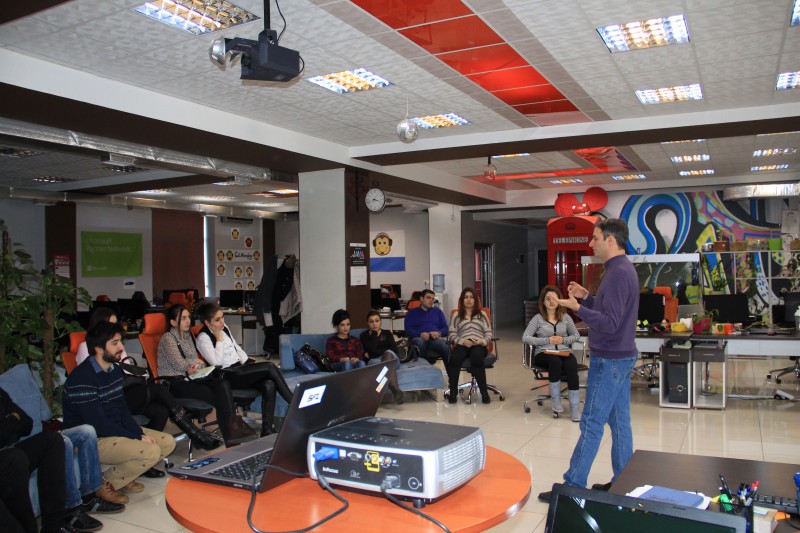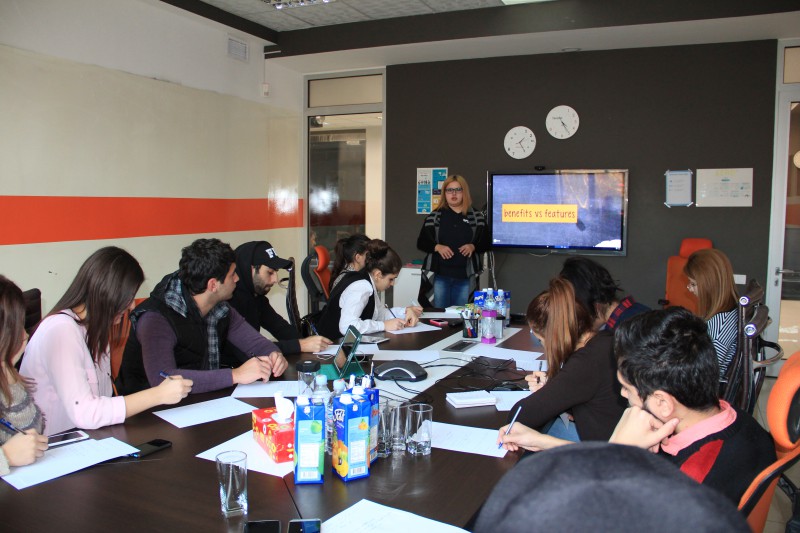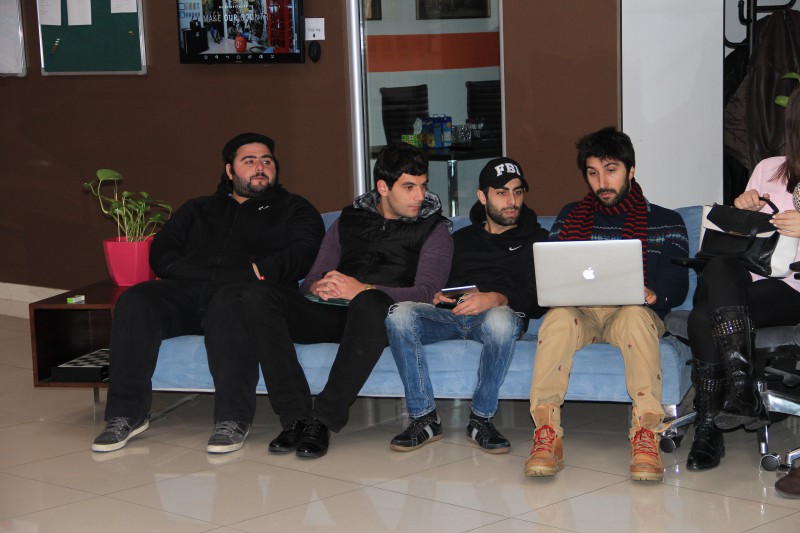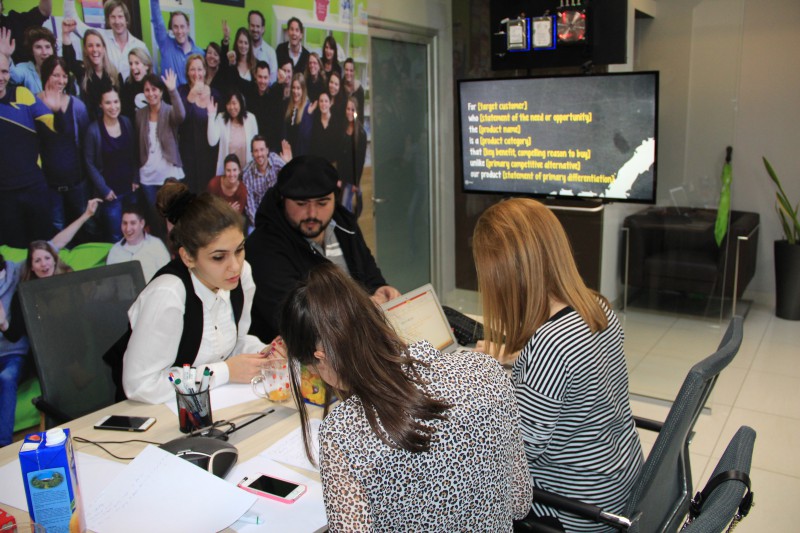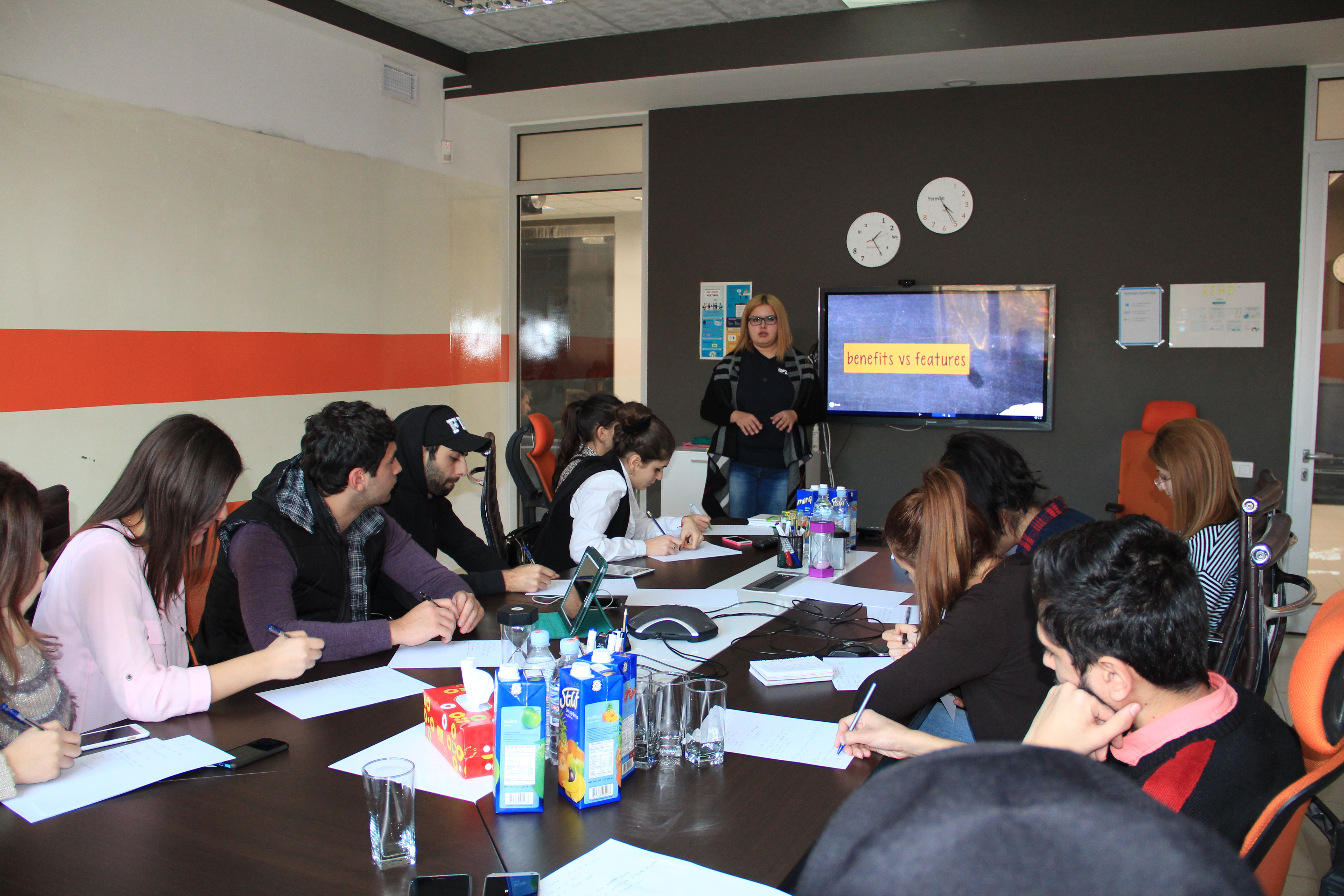
AUA’s Engineering Students Offer Information Services Solutions to Challenges Faced by Three Yerevan-Based Clients
4 min readYEREVAN, Armenia – In order to manage some of their services and activities in a more streamlined and efficient manner, the American University of Armenia’s (AUA) Accreditation Office, Ayb High School, and Easy-Pay Payment Terminals Company sought the help of AUA students enrolled in IESM 347: Design and Innovation of Information Services. IESM 347 is a master’s level course offered by the College of Science and Engineering, in which students are assigned a real-life problem in information services (IS) that requires a custom-designed solution. Lucky for the three entities, the solutions to their problems lay within the realm of IS.
The AUA Accreditation Office requested a design of a collaborative platform assisting faculty members and program chairs to develop and improve subject syllabuses to comply with quality standards imposed by the University and monitored by the Accreditation Office. Ayb High School presented its need for a design for an online and mobile collaborative application that will streamline intensive communication among teachers, students, and parents through making deadlines for individual and group assignments easier to track and progression status equally visible and easier to track to all parties. Finally, Easy-Pay Payment Terminals Company talked about its search for a design of a collaborative service to assist with planning and monitoring of terminal installation and maintenance work carried out by a mobile workforce in geographically dispersed locations. The mobile workforce needed access to a centralized database on the technical specifications of the terminals, as well reporting capabilities.
To produce the requested solutions using IS tools, the AUA students used soft systems methodology, as well as information systems design, to guide the process of their action research into the three projects. The aim of action research is to study more carefully the IS problems that clients face, which, in these instances, were in the areas of mobile workforce management, daily intensive customer communication and relations management, and effective collaboration and document management.
Based on the careful studies that were conducted through discussions with employees and the management teams at each of the entities, the AUA students were able to build a deep contextual understanding of the problem, as well as structure the complex organizational information problems into solvable parts. This resulted in developing relevant systems and conceptual models to guide the main changes the company was seeking to implement with the help of a new information system and IS tools. The students’ task was to understand and structure the problem that their clients faced and to offer structured solutions to the chaotic situations that many organizations find themselves in, according to Arthur Khalatyan, the lecturer of IESM 347.
“If you don’t ‘dig’ deep enough into a management problem that an organization is facing, if you don’t talk to many people, if you never listen to divergent and conflicting opinions around the same issue, it is then hard indeed to create solution models, both software tools and improved business processes, that people working in organization will be comfortable to use and follow,” Norayr Ben Ohanyan, one of the three student project managers, said.
Khalatyan, who hoped that his students enjoyed the action research, detailed the steps required for such research, including interacting with real people, doing real jobs, and coming face-to-face with real challenges as the students did when they carried out their daily tasks. “I believe one of the most exciting and interesting revelations for the students is that, by working hand-in-hand, people have quite different perspectives on what procedure to follow or how to make decisions in certain organizational situations,” Khalatyan said.
For the final stage of the each project, the teams dived into a ten-hour “bootcamp” on December 5 at SFL, one of the most prominent and inspiring software development companies in Armenia. They presented their conceptual models and worked with a team of industry professionals, such as IT project managers, product owners, developers, and UX UI designers to produce a final set of “codable” requirements, and develop mockups and user stories. Representatives from AUA, Ayb, and Easy-Pay, along with their teams of developers, were also present at the brainstorming session to assist with the development of software solution requirements.
The IT professionals also provided master classes, trainings, and discussions for the project owners, project managers, software developers, and user experience and user interaction designers on each of the AUA project teams. The SFL’s product management professionals organized hands-on training on all major phases of a software development project. AUA’s students greatly appreciated this opportunity during the “bootcamp” and credited it as “finally giving them a clear idea of the whole process of designing a solution to an organizational information problem, which results in a usable software or application.” Inception deck, product feature design, user cases, and prototyping were just a few of the dozen of new IS processes that SFL shared with AUA students.
Aram Hajian, dean of the College of Science and Engineering at AUA, Araksia Martirossian, president of IAB International Academy of Business, and Raffi Kassarjian, IT entrepreneur and lecturer at AUA gave speeches at the opening of the “bootcamp” loaded with inspirational messages, advice, and encouragement for the long day ahead.
“Listen carefully to your customers and keep experimenting with producing and upgrading multiple versions of your solution,” urged Kassarjian, emphasizing the importance of students interacting with real customers with real problems, that may be hard to imagine otherwise, and coming to solutions that work for all parties involved. Martirossian talked about the entrepreneurial mindset and on the importance of “becoming comfortable with being uncomfortable” as entrepreneurs. “Curiosity, caring, confidence, and openness to new ideas and virtually all the things that make you think out of box are what people with an entrepreneurial mindset share in common,” Martirossian said.
IESM 347 is just one way in which AUA is drawing academia and the business world, particularly the IT business world, closer together in mutually beneficial and supportive ways. “AUA college of Science and Engineering remains committed to maximizing the effectiveness of the handshake between academia, on the one hand, and cutting edge companies, on the other,” Hajian said, and shared his excitement about being part of both a fast-changing and rapidly growing field, the IT field, and efforts for Armenia to brand itself as a leader in the field.
Founded in 1991, the American University of Armenia (AUA) is a private, independent university located in Yerevan, Armenia and affiliated with the University of California. AUA provides a global education in Armenia and the region, offering high-quality, graduate and undergraduate studies, encouraging civic engagement, and promoting public service and democratic values.
